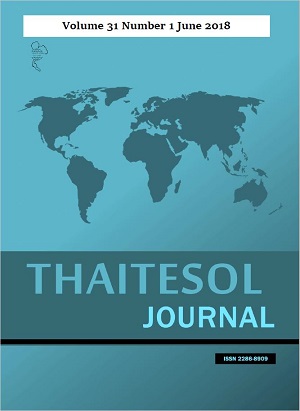Students’ Perceptions to Cultivating Intercultural Competence Activities: A Case Study of a Vietnamese University
Main Article Content
Abstract
The integration of cross-cultural communication in Vietnam has constantly increased since this nation officially became a member of regional and international organizations such as ASEAN and WTO. This has driven Vietnam to integrating with many worldwide nations in various areas of science, technology, economics, and cultures. English language, therefore, has obviously been a bridge for cross-cultural communication thanks to its worldwide lingua franca (Brown, 1994). For these reasons, raising intercultural communicative competence (ICC) in English language curriculum has been emphasized in most Vietnamese university contexts. This study aims to investigate students’ perceptions to cultivating intercultural competence activities developed from previous scholars via a qualitative case study. The study deployed students’ reflection and open-ended questionnaire to sixty Vietnamese English-majored freshmen. The findings revealed that the student participants experienced positive knowledge, skills of interacting, and attitudes to ICC activities. Possible measures were implied for effective ICC cultivation.
Article Details
Materials in THAITESOL JOURNAL may be photocopied for educational purposes. Under no circumstances may any part of this journal be photocopied for commercial purposes.
References
Brown, H. D. (1994). Principles of Language Learning and Teaching. New York: Prentice Hall
Regents.
Byram, M. (1997). Teaching and Assessing Intercultural Communicative Competence. Bristol,
England: Multilingual Matters.
Byram, M., & Risager, K. (1999). Language Teachers, Politics, and Cultures. Clevedon, England:
Multilingual Matters.
Canale, M., & Swain, M. (1980). Theoretical basis of communicative approaches to second language
teaching and testing. Applied Linguistics, 1(1), 1–47.
Cohen, L., Manion, L., & Morrison, K. (2011). Research methods in education (7th ed.). London ;
New York: Routledge.
Hartman, A., & Ditfurth, M. (2007). Introduction to English language teaching. Stuttgart: Klett
Ho, K. (2011). An intercultural perspective on teaching and learning in the Vietnamese EFL
classroom. University of Sydney Papers in TESOL, 6(3), 43-69.
Ho, K. (2014). Implementing intercultural language teaching: A new challenge for foreign language
teaching in Vietnam. Tap Chi Khoa Hoc va Cong Nghe, Truong Dai hoc Da Nang (Journal of
Science and Technology of Da Nang University), 6 (79), 53-57.
Hsieh, H., & Shannon, S. E. (2005). Three approaches to qualitative content analysis. Qualitative
Health Research, 15 (9), 1277-1288.
Hymes, D. (1972). Models of the interaction of language and social life. In J. Gumperz & D. Hymes
(Eds.), Directions in Sociolinguistics (pp. 35–71). New York: Blackwell.
Kenny, T., & Wada, T. (2008). Listening Advantage, Student Book 1, 2. Thomson Heinle.
Kramsch, C. (1993). Context and culture in language teaching. Oxford: Oxford University Press.
Lázár, I., Huber-Kriegler, M., Lussier, D., Matei, G. S., & Peck, C. (Eds.) (2007). Developing and
Assessing Intercultural Communicative Competence. A Guide for Language Teachers and Teacher
Educators. European Centre for Modern Languages. Strasbourg: Council of Europe.
Liton, H. A., & Qaid, A. S. A. (2016). Addressing intercultural communication issue in teaching
English. International Journal of Humanities and Applied Sciences (IJHAS), 5(1), 40- 44.
McMillan, J. H., & Hearn, J. (2008). Student self-assessment: The key to stronger student motivation
and higher achievement. Educational Horizons, 87 (1), 40-49.
Moeller, A. K., & Nugent, K. (2014). Building intercultural competence in the language classroom. In
Dhonau, S. (Eds.), Unlock the Gateway to Communication (pp. 1–18). Central States Conference
Report: Eau Claire, WI: Crown Prints.
Neff, P., & Rucynski, J. (2013). Tasks for integrating language and culture teaching. English
Teaching Forum, 2, 13-23.
Newton, J. (2014). Motivating learners through intercultural communicative language teaching
(iCLT). JANTA News, 86, 14-19.
Newton, J. (2016). Cultivating intercultural competence in tertiary EFL programs. Crossing Borders
in Language Teaching and Business Communication: Proceedings of the 11th ELT Conference at
AE CYUT, 1-22.
Nguyen, D. C. (2013). Cultural diversity in English language teaching: Learners’ voices.
English Language Teaching, 6 (4), 1-7.
Nguyen, T. L. (2013). Integrating Culture into Vietnamese University EFL Teaching: A Critical
Ethnographic Study. PhD thesis, Auckland University of Technology. Retrieved from
http://aut.researchgateway.ac.nz/handle/10292/5975
Nguyen, T. M. H. (2007). Developing EFL learners’ intercultural communicative competence: a gap
to be filled? Asian EFL Journal, 21, 122-139.
Omaggio, A.C. (1993). Teaching Language in Context. Boston: Heinle and Heinle
Tran, Q. T., & Seepho, S. (2014). Intercultural language teaching in the context of Vietnam: A gap to
be filled. An International Refereed E-Journal of Literary Explorations, 2 (2), 27-38.
Vo, Q. P. (2017). Rethinking intercultural communication competence in English language
teaching: A gap between lecturers’ perspectives and practices in a Southeast Asian tertiary context.
I-manager’s Journal on English Language Teaching, 7 (1), 20-29.


